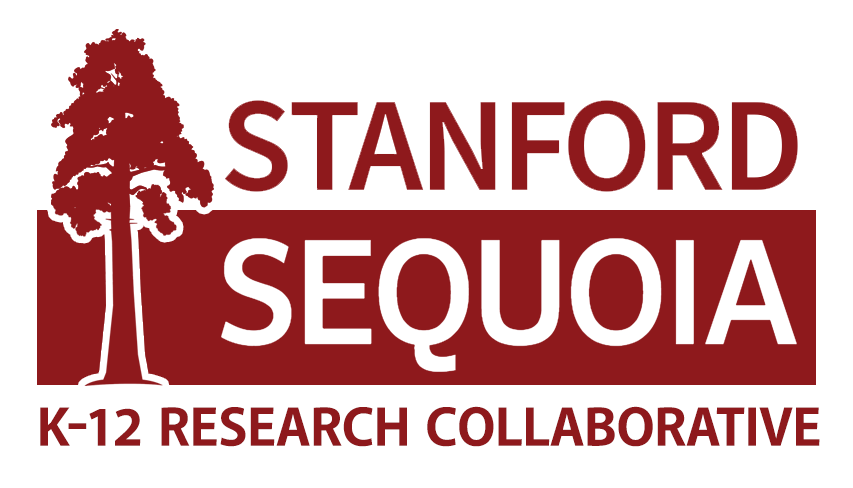Stanford-Sequoia K-12 Research Collaborative

The Stanford-Sequoia K-12 Research Collaborative is a research practice partnership between the Stanford Graduate School of Education (GSE) and nine local school districts. It began in 2016 as an idea shared by Dan Schwartz, Dean of the Stanford Graduate School of Education (GSE), and Jim Lianides, former superintendent of the Sequoia Union High School District. Their idea was to create a long-standing, mutually beneficial partnership between the GSE, Sequoia Union and its 8 elementary feeder districts. Since the 2016 launch, this Collaborative has co-developed 20 research projects with Stanford researchers. Our research focuses on supporting the long-term success of multilingual learners across the nine districts by identifying the conditions, resources, strategies, policies and practices that lead to positive outcomes for students.

Contact Us

Diana Mercado-Garcia
Associate Director, Research-Practice Partnership Program
California Education Partners
dmercadogarcia@caedpartners.org
Our Vision and Values


Learn More About Us
GSE News: Stanford launches research collaborative with nine local school districts
Closing the Research-Practice Gap in Education, by Laura Wentworth, Ritu Khanna, Michelle Nayfack & Daniel Schwartz in Stanford Social Innovation Review. Spring 2021.
Research on English Learner Classification & Reclassification
Brenda L. Valdez, Amado Padilla, Oswaldo Rosales, Ritu KhannaThis scoping review, prepared by graduate students Brenda Valdes and Oswaldo Rosales and professor Amado Padilla, synthesizes 25 years of empirical research on the classification and reclassification of English learner students, with particular attention to how EL subgroups (including newcomers, LTELs, and dually classified students) have been studied.
Improving the Reclassification Process for Long-Term English Learners in California
Sebastian Castrechini, Laurel SipesCalifornia now requires that school districts report outcomes for Long-Term English Learners, and new Gardner Center research identifies real-world improvements to the reclassification process as a way to support their academic success for this group of students.
Summary of Recommendations for the Home Language Survey
Edwin AmayaThe Home Language Survey has long served as a foundational tool for assessing the linguistic backgrounds of students in U.S. schools. This research summary examines the HLS’s historical adaptations post the pivotal 1974 Lau vs. Nichols Supreme Court decision, its current validation challenges, and its potential biases, proposing a detailed agenda for future research to […]
National English Learner Reclassification Policies and Processes
Edwin AmayaThis research summary of a study by Morales & Lepper (2024) explores the complexities of English Learner reclassification policies across the United States, highlighting how varied criteria and policy complexities affect EL students’ educational trajectories and outcomes. By comparing states with different reclassification strategies, the study provides insights into the implications of policy structures on […]
California Dyslexia Screener Requirements
See a visual chart of most common FAQs around dyslexia, prepared by Prof. Jason Yeatman’s ROAR team.
How do students become long-term English learners (LTELs)?
Prepared by: Hsiaolin Hsieh; Academic Advisor: Guillermo Solano-FloresSee a visual chart of how students become long-term English learners, prepared by researcher Hsiaolin Hsieh and Prof. Guillermo Solano-Flores.
To reclassify or not reclassify: The how is as important as the when
Hsiaolin HsiehA Literature Brief on EL Reclassification Researcher Hsiaolin Hsieh and Prof. Guillermo Solano-Flores reviewed the literature on reclassification to create a resource for new district leaders and researchers interested in an overview on the topic. The research summary explores key questions that our district partners have raised about reclassification for anyone who would like additional […]
Appendix – What do we know about Dually Identified Students?
Tatiana Zamora, Faculty Advisor: Amado PadillaWhat do we know about Dually Identified Students? An Emerging Research Agenda
Tatiana Zamora, Faculty Advisor: Amado PadillaWithin the Stanford-Sequoia K-12 Research Collaborative, questions have emerged asking what is known and not known about dually identified students – students who qualify for English Learner and Special Education services. This research summary explores these questions to develop an emerging research agenda that could guide future study designs.
Redwood City School District Core Elements of an Empowered Learner Program Report 2022
Redwood City School DistrictTo develop and promote new digitally augmented learning activities that are responsive to their actual classrooms, the Redwood City School District (RCSD) enacted a new model of professional development, now called the “Empowered Learning Program”. This guide was developed through a collaboration between the RCSD and Stanford University to identify the core elements of the program […]








